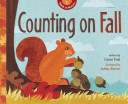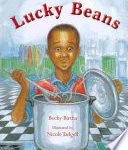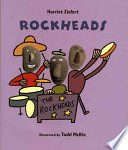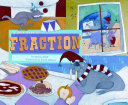Listed below are selected teacher resources, picture books, and non-fiction related to number sense and numeration.
Teacher Resources
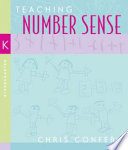 Teaching number sense, kindergarten
Teaching number sense, kindergarten
by Chris Confer
Grades: K-1
Number sense encompasses a wide range of skills, including being able to make estimates and to think and reason flexibly. In these lessons, children investigate number relationships, practice problem solving using landmark numbers, and explore ways to count, compose, and decompose numbers.
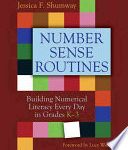 Number sense routines: Building numerical literacy every day in grades K-3
Number sense routines: Building numerical literacy every day in grades K-3
by Jessica F. Shumway
Grades: K-3
Just like athletes and musicians, mathematical thinkers and problem solvers can benefit from daily warm-up exercises. The author has developed a series of routines designed to help young students internalize and deepen their facility with numbers. The daily use of these quick five-, ten-, or fifteen-minute experiences at the beginning of math class will help build students’ number sense.
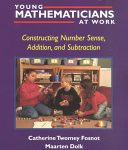 Young mathematicians at work: Constructing number sense, addition, and subtraction
Young mathematicians at work: Constructing number sense, addition, and subtraction
by Catherine Twomey Fostnot and Maarten Dolk
Grades: K-3
This book provides a new look at the teaching of computation. It moves beyond debates about algorithms to argue for deep number sense and the development of a repertoire of strategies based on landmark numbers and operations. Sample minilessons on the use of the open number line model are provided to show teachers how to support the development of efficient computation.
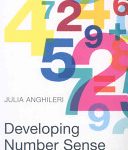 Developing number sense: Progression in the middle years
Developing number sense: Progression in the middle years
by Julia Anghileri
Grades: 4-7
What is number sense? How do children develop number sense? What are the most effective teaching methods and resources? How can research findings inform classroom practice? This book will help teachers answer these questions, and more. The author focuses on the connections that help to develop understanding, such as how counting underpins many calculating methods and the way mental working and informal jotting can support problem solving.
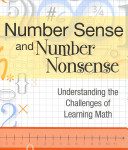 Number sense and number nonsense: Understanding the challenges of learning math
Number sense and number nonsense: Understanding the challenges of learning math
by Nancy Krasa and Sara Shunkwiler
Grades: K-8
This book brings math difficulties into clear focus, helping educators get inside students’ heads so they can devise the best way to help children learn. Readers will gain a research-based understanding of what it means when students struggle with understanding relative values, comprehending spatial configurations, reading and writing numerals or other symbols, mastering arithmetic facts or algorithms, and more.
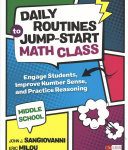 Daily routines to jump-start math class, middle school: Engage students, improve number sense, and practice reasoning
Daily routines to jump-start math class, middle school: Engage students, improve number sense, and practice reasoning
by John J. SanGiovanni and Eric Milou
Grades: 6-8
The authors give a year’s worth of daily instructional material for use in each class period to promote student reasoning and number sense, foster and shore up students’ conceptual understanding, and engage students in mathematical discourse and reasoning.
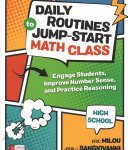 Daily routines to jump-start math class, high school: Engage students, improve number sense, and practice reasoning
Daily routines to jump-start math class, high school: Engage students, improve number sense, and practice reasoning
by Eric Milou and John J. SanGiovanni
Grades: 9-12
Kickstart your class with five daily 5–10 minute routines, all of which include content-specific examples, extensions, and variations for high school mathematics. These routine help students to frequently revisit essential mathematical concepts, engage in mental mathematics, and move learning beyond “correctness” by valuing mistakes and discourse and encouraging a growth mindset.
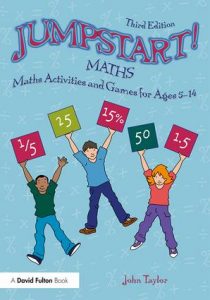 Jumpstart! Maths: Maths activities and games for ages 5-14
Jumpstart! Maths: Maths activities and games for ages 5-14
by John Taylor
Grades: K-8
The author presents a collection of simple-to-use, multi-sensory games and activities which will jumpstart students’ understanding of mathematics in action. It will help students to explore and learn math both through technology and without, in an atmosphere of fun, mutual support and tolerance. Topics include number and place value, fractions, ratios, algebra, measurement, geometry, and more. (E-book only)
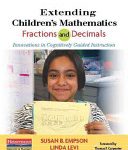 Extending children’s mathematics: Fractions and decimals
Extending children’s mathematics: Fractions and decimals
by Susan B. Empson and Linda Levi
Grades: K-8
This book lays a foundation for understanding fractions and decimals in ways that build conceptual learning. Three themes are showcased: building meaning for fractions and decimals through discussing and solving word problems; the progression of strategies for solving fraction word problems and equations from direct modeling through relational thinking; and designing instruction that capitalizes on students’ relational thinking strategies to integrate algebra into teaching and learning fractions.
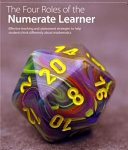 The four roles of the numerate learner: Effective teaching and assessment strategies to help students think differently about mathematics
The four roles of the numerate learner: Effective teaching and assessment strategies to help students think differently about mathematics
by Mary Fiore and Maria Luisa Lebar
Grades: K-6
This book introduces a numeracy framework–sense maker, skill user, thought communicator, and critical interpreter–that supports an integrated approach to math instruction. It considers the mathematical practices students need to learn to construct number knowledge, become mathematicians, and simply “do math”. The goal is to provide a new way of thinking and learning where learners engage in critical thinking about numeracy and act on their knowledge. (Also available online)
Picture Books
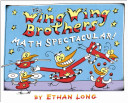 The Wing Wing brothers math spectacular!
The Wing Wing brothers math spectacular!
by Ethan Long
Wilber, Wendell, Willy, Walter, and Woody really know how to put on a show – and their slapstick routine is also a math lesson. They introduce the concepts greater than, less than, and equal to as well as addition and subtraction.
written by Lizann Flatt, illustrated by Ashley Barron
What if animals and plants knew math, just like you? Would leaves fall in patterns? Would whales enter a race? Nature in the fall comes to life to help children grasp concepts of number sense and numeration.
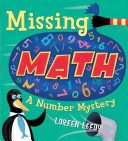 Missing math: A number mystery
Missing math: A number mystery
by Loreen Leedy
What happens when one day, all the numbers in town suddenly disappear? No one can count, use the phone, or find out what time it is. No one can use their computers, money, or rulers. Can the town detective solve the mystery?
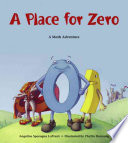 A place for Zero: A math adventure
A place for Zero: A math adventure
written by Angelina Sparagna LoPresti, illustrated by Phyllis Hornung
Having nothing to bring to the game of Addemup, Zero cannot play with the rest of the players in Digitaria and so must come up with a clever plan that will let him play despite his numeric shortcomings.
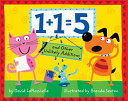 1+1=5: and other unlikely additions
1+1=5: and other unlikely additions
written by David LaRochelle, illustrated by Brenda Sexton
Is the answer to 1+1 always 2? Not when you add 1 goat + 1 unicorn and get 3 horns, or 1 set of twins and 1 set of triplets and get 5 babies, or 1 ant and 1 spider and get 14 legs!
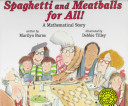 Spaghetti and meatballs for all: A mathematical story
Spaghetti and meatballs for all: A mathematical story
written by Marilyn Burns, illustrated by Deborah Tilley
Mr. and Mrs. Comfort have arranged tables and chairs to seat 32 people at their family reunion. But the guests have their own ideas for seating. How will the family make room for everyone?
written by Becky Birtha, illustrated by Nicole Tadgell
During the Great Depression, Marshall uses the lessons he’s learned in arithmetic class and guidance from his mother to figure out how many beans are in a jar in order to win her a new sewing machine in a contest.
written by Harriet Ziefert, illustrated by Todd McKie
Increasing numbers of rock-headed characters enjoy a variety of activities, each specific to the number on the page. Four rockheads play in a quartet, five make a basketball team, and nine play on a baseball team.
written by Trisha Speed Shaskan, illustrated by Francesca Carabelli
What would you be like if you were a fraction? You’d be part of a set. You could be divided more than once. What else would you be if you were a fraction? (Part of the Math fun series)
Non-Fiction
The My path to math series
Grades: K-3. This series of 22 books addresses topics such as addition, subtraction, rounding, math words and symbols, and more.
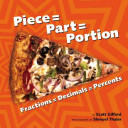 Piece = part = portion: Fractions = decimals = percents
Piece = part = portion: Fractions = decimals = percents
written by Scott Gifford, illustrated by Shmuel Thaler
Grades: K-6
Just as hola and bonjour mean “hello”, fractions, decimals, and percents describe the same thing in slightly different ways in the language of math. The photographs in this book will illustrate for students the ways in which these concepts all come back to the same basic idea.
Finding More Resources
To find more resources in this area, try the following:
- Search using the General tab on the UBC Library website to look for material in all UBC Library branches.
- Search using “Search Education Resources” box in the left hand bar on the Education Library website to limit your results to materials in the Education Library.
- Use specific search terms to narrow your results, such as “numeration–study and teaching”, “mathematics–study and teaching”, or “number sense”.
- To find lesson plans, include “lesson plans”, “lesson planning”, or “activity programs” in your search terms.
For more help with searching, please visit the Library Service Desk or e-mail ed.lib@ubc.ca.
